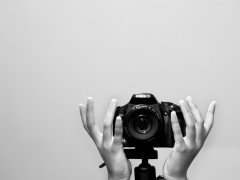
Photography itself is a very creative hobby (or profession for that matter). Thus when referring to “creative photography” I actually refer to the extra creativity required above and beyond the creativity for photography. This means tricks and out-of-the-box ideas to capture “photographic fiction” — something that really doesn’t (perhaps) happen or is seen naturally. Here’s an example:
So how do you get to be creative above and beyond what you already are? This is a two part series on creative photography. Part I is about getting the creative vision. Let’s get started.
-
Creative Vision
I confess, I wasn’t born smart or creative. But I was notorious and mischievous. A notorious vision can get you creative beyond imagination. The notorious vision adds in making funny, wacky and spiced up photographs and enable you to portray something unusual which creates interest for the common man. This was just one way of getting creative, while you can closely observe the background and foreground, apply some mathematics and science and this is how you get, the “creative vision“.
-
Creative Illusion
Remember “Seeing is believing” and “the camera doesn’t lie”. That’s what you need for creating effective photographic fiction — creative photography. This is what induces the element of surprise and interest. If either is missing, it kills the “creative value” of the photograph. Creative photography is more like a magical trick, the purpose is to thus, present the art with such a finish that the viewer consider it as a pure “magic”.
-
Creative Inspiration
Take inspiration from others work. See how others approached it, what did they look for and how did they capture it. Try the same shots. Try to duplicate the results. On second thoughts, if you can’t make it, fake it. And once you are able to get so far, extend it with your own creativity by presenting your imagination and vision of things around you.
-
Creativity Grooms With Experience
Experience as a photographer in the long term will groom you as a creative photographer. You would be able to see the way camera sees it. With time you’ll know how various three-dimensional objects align together into a two dimensional photograph. How the Eiffel Tower in the far background will project smaller than the subject in the front and how you can align both to get some notorious perspectives.
-
Creatively Look For The Unusual
While the human beings are accustomed to daily life objects and scenes, capturing something unusual definitely draws the viewers interest. Look out for the varying shapes of clouds, analyze the relations between the natural elements and creatively observe the real-life frames to get an inspiration as to what will look real, yet surreal.
-
Break The Rules Creatively
Photography is a field of art where the creativity flourishes when there are no limits and bounds. Free your imaginations and break the rules. Sometimes, intentionally breaking the rules help you in getting creative results.
-
Effectively Using Lens Distortion
If you shoot portraits, you’d probably use a portrait lens or a zoom lens is also good enough. How about using a wide-angle for portraits? That will distort the perspective bringing in an element of humor. The application of lenses vary according to the scene and the subject. Likewise a fish-eye lens is suitable for distorting architectural photography to render curves to domes and arches. If you inter-mingle the application of lenses, perhaps using a fish eye lens or a wide angle lens for photographing people, it will result in some seriously funny and humorous postures and facial features.
-
Portraying Out Of Context Subjects
You can get amazing results by reversing the theories of aperture and depth of field. Normally speaking, shallow depth of field is used for focusing the subject (or the center of interest) and separating it from the rest of the scene by blurring the background. You can put it the other way round and choose to blur the subject while focusing on the rest of the scene to get creative results.
-
Capturing Only A Part Of The Whole Truth
It is not always necessary to portray the entire scene and put forth the complete story. The creativity flourishes when the partial truth is portrayed. When you portray only a part of the truth (or the scene), it eliminates reality in the story and sometimes results in visually ambiguous (or abstract) images. You can also present the perspective of distorted or alternate reality. These qualities leave the viewer puzzled as to what the photographer wants to convey through the images and invite discussions for interpretation of the artists thoughts on the scene.
-
Distorted Shadows Create Intriguing Shapes
This point came to my mind after looking at a photograph of a ring casting a heart-shaped shadow. The shadow of any subject takes the form of the surface; if the surface is distorted, the shadows tend to be abstract and can create intriguing shapes. Photographing such shadows along with the subject makes the viewer inquisitive about the technique used in making the creative photograph.
-
Playing With Scale, Perspective, Composition, Expression
Creative photography is about portraying the reality, but with the difference. A difference in the perspective and a shift in the angle of view helps in portraying larger (or smaller) than life images, thus, drawing the viewer’s eye to look at the unusual aspect of the real life objects. Try new angles, compositions and perspectives to portray something unique creatively. Creativity is driven by the discovering new ideas, concepts and vision. Sounds a serious stuff! Make it light by emulating a humorous scene. Perhaps a statue portrayed as kicking the working man or an animal reading the book.
-
Applying Advanced Photography Techniques
Apart from gaining the creative vision, you need to be familiar with the advanced photography techniques which help you in capturing creative vision. You can get some good creative and trick photographs if you are flexible with using the techniques like multiple exposure, time lapse photography, panning, long exposure photography, etc.
Watch out this space for the Part II of this series covering techniques in Creative Photography. Meanwhile check out some cool examples of creative photography.

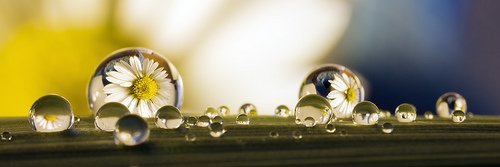
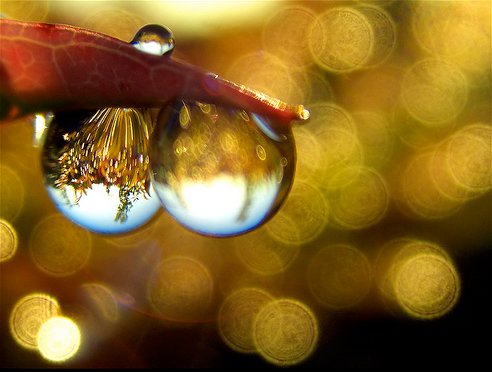
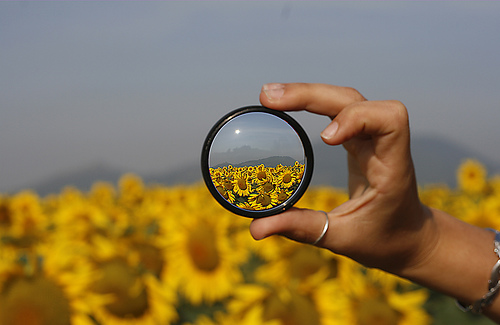
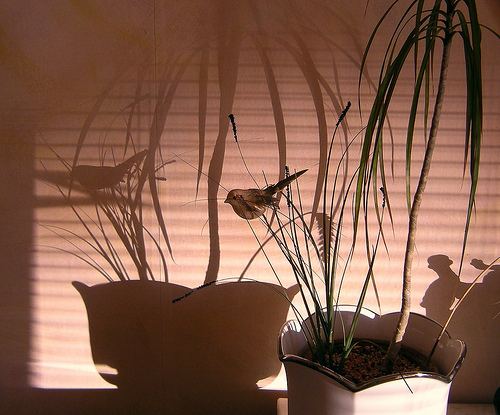

During workshops and tours I conduct, I observe a variety of participants making photographs. Students with good ideas and personal vision are often restricted by their lack of technical skills and, more commonly, those who are technically competent often lack creative imagination. However, the vast majority of photographers may lack a little of both elements. In the process of making photographs, these elements become mutually dependent and serve as both a means and an end to the process.